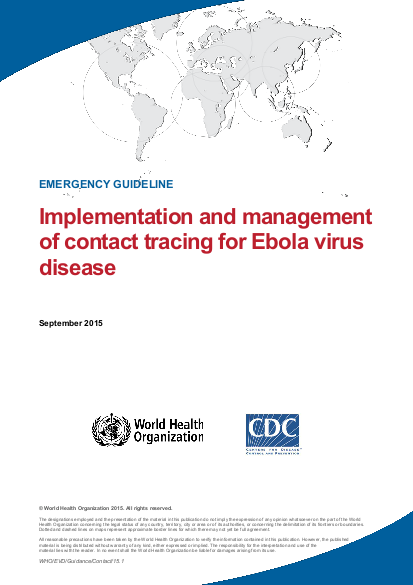Emergency Guideline

Overview
A person with Ebola virus disease can spread the disease to others as soon as he or she begins to have symptoms. Therefore, it is important to identify and isolate symptomatic persons immediately in order to stop the disease from spreading. Contact tracing is one of the tools to effectively break chains of transmission and control EVD outbreaks.
Contact tracing is the process of identifying, assessing, and managing people who have been exposed to a disease to prevent onward transmission. People who may have been exposed to EVD are systematically followed for 21 days (the maximum incubation period for the disease) from the date of the most recent exposure. This process allows for the rapid identification of people who become symptomatic.
The document covers: introduction on contact tracing in the Ebola response; general considerations for contact tracing; case definition; planning and preparation; personnel; implementation, and tools for contact tracing.
Links
Resource collections
- COVID-19 Response Collection
- Evaluating humanitarian action
- Learning from crises
- UN Habitat - Urban Response Collection
- Urban Response - Urban Crisis Preparedness and Risk Reduction
- Urban Response Collection - Community Engagement and Social Cohesion
- Urban Response Collection - Economic Recovery
- Urban Response Collection - Environment and Climate Change
- Urban Response Collection - Housing, Land and Property
- Urban Response Collection - Urban Crisis Response, Recovery and Reconstruction
- Urban Response Collection - Urban Resilience
